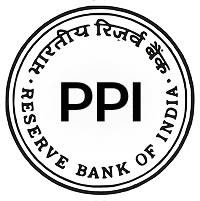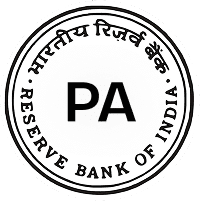In every salary structure, different allowances are provided to support employees in meeting their financial needs. Among these, Dearness Allowance (DA) holds special importance, especially for government and public sector (PSU) employees.
The DA full form is Dearness Allowance, and it is a cost-of-living adjustment paid to employees to reduce the impact of inflation on their earnings. Simply put, what is DA in salary? It is an allowance calculated as a percentage of the basic pay, with the percentage revised periodically based on inflation indices such as AICPI.
In India, the government revises DA twice a year—January and July—based on the All India Consumer Price Index (AICPI). For example, the latest DA hike for central government employees in 2025 has been announced, offering relief against rising prices. This makes DA one of the most important salary components that directly impacts take-home pay and pensions.
What is Dearness Allowance?
The DA full form is Dearness Allowance.
In simple words, Dearness Allowance (DA) in salary is the cost-of-living adjustment paid to employees and pensioners to protect their purchasing power against rising prices. Since inflation directly affects household budgets, DA is designed to ensure that salaries and pensions keep pace with the increasing cost of essential goods and services.
The objective of DA is to offset the adverse effects of inflation, making it a crucial element in the salary structure of government employees. It is also applicable to pensioners, where it is known as Dearness Relief (DR). Although DA is rarely offered in private companies, some corporates may provide a similar inflation-linked allowance in special cases.
In salary slips, DA appears as a separate allowance component, usually calculated as a percentage of the basic pay. This percentage is revised periodically by the government based on the All India Consumer Price Index (AICPI).
What Is DA?
DA, or Dearness Allowance, is a salary component paid by the government to employees and pensioners to offset the impact of inflation. As the cost of living increases, DA helps maintain the employee’s purchasing power by adjusting their salary in line with rising prices. It is mainly given to central government employees, state government employees, and public sector workers in India.
Dearness Allowance is calculated as a percentage of the basic salary and is revised twice a year—once in January and once in July—based on the Consumer Price Index (CPI). There are two types of DA: Industrial Dearness Allowance (IDA) for public-sector employees and Variable Dearness Allowance (VDA) for central government employees.
Purpose of DA
The main aim of DA is to compensate employees for the effects of inflation on their earnings. As prices rise, the value of a fixed salary reduces, so employees tend to be worse off as they are unable to buy the same goods and services as they used to. DA helps employees cope with the rising cost of living by adjusting their salary.. The adjustment is thus necessary to maintain employees’ standard of living, especially given that in India, inflation is a matter of significant concern for many.
DA is not only a financial adjustment but also helps retain employees. If salaries are indexed to inflation, it will keep employees’ morale high and reduce turnover. It is a well-known fact that employees who feel that their financial needs are met are less likely to leave the company.
Who gets Dearness Allowance?
Dearness Allowance is primarily applicable to the following groups:
- Government Servants: DA is a crucial element of the pay structure of central and state government employees. It is revised from time to time to keep pace with the changes in the cost of living, thereby ensuring that government employees’ real income is maintained over time.
- PSU Employees: Employees of Public Sector Undertakings (PSUs) also receive DA as part of their salary. When DA is part of the salary structure of PSUs, it brings the pay package of these employees in line with the economic reality of the workforce.
- Pensioners: A pension is the income given to retired government employees who used to draw their salary from the government. DA is included in pensions so that their income remains relevant to the cost of living, and they can easily manage their expenses and maintain their standard of living.
DA tends to be less common in the private sector, although many large private companies adjust wages through annual increments or cost-of-living adjustments. Some private sector companies – especially in inflation-sensitive industries – will add DA to their salary packages to better compete with the public sector.
Types of Dearness Allowance
Dearness Allowance is not the same for every employee. It is categorized based on the type of employment and the sector in which the employee works. The main types of DA are:
1. Central Dearness Allowance (CDA)
This is the DA paid to central government employees and pensioners. The rate of CDA is revised twice every year — January and July — as per the recommendations of the Pay Commission and based on the All India Consumer Price Index (AICPI). CDA applies to employees working under the Central Government and is an important part of their take-home salary.
2. Industrial Dearness Allowance (IDA)
IDA is paid to public sector (PSU) employees. Unlike CDA, IDA rates are revised quarterly — January, April, July, and October — based on the movement of the Consumer Price Index (CPI) for Industrial Workers. This quarterly revision ensures that PSU employees’ salaries remain aligned with inflation trends more frequently than their central government counterparts.
3. Variable Dearness Allowance (VDA)
VDA applies to workers earning minimum wages, especially in scheduled employment under the Minimum Wages Act. VDA is revised every six months, usually on April 1 and October 1, depending on the changes in the CPI. It directly impacts the minimum wage calculation and ensures workers receive compensation in line with the cost-of-living changes.
Type of Dearness Allowance |
Who Gets It |
Revision Frequency |
Based On |
Key Highlights |
|---|---|---|---|---|
Central Dearness
Allowance (CDA) |
Central Government employees & pensioners |
Twice a year (January & July) |
All India Consumer Price Index (AICPI) |
Recommended by the Pay Commission, a major component of the central government’s salary structure |
Industrial Dearness Allowance (IDA) |
Public Sector Undertaking (PSU) employees |
Quarterly (Jan, Apr, Jul, Oct) |
Consumer Price Index (CPI) for Industrial Workers |
Revised more frequently; helps PSU salaries stay aligned with inflation |
Variable Dearness Allowance (VDA) |
Workers earning minimum wages under scheduled employment |
Twice a year (April 1 & October 1) |
Consumer Price Index (CPI) |
Directly affects minimum wage calculation; ensures wages reflect cost-of-living changes |
Dearness Allowance in Salary Structure
Dearness Allowance (DA) is one of the most visible components in a salary slip, especially for government employees. DA full Form in salary is dearness Allowance. It is calculated as a fixed percentage of the basic pay and appears as a separate line item in the pay structure.
DA in salary structure refers to “Dearness Allowance”.
Where DA Appears in the Salary Slip
In a typical salary slip, DA is listed right below Basic Pay and before other allowances like HRA (House Rent Allowance) and TA (Transport Allowance). Since it is inflation-linked, any revision in DA directly increases the gross salary and impacts take-home pay.
DA Calculation Formula – Step-by-Step Guide
Understanding how to calculate Dearness Allowance (DA) helps you know your exact salary breakup and plan taxes better. DA is revised every six months based on the All-India Consumer Price Index (AICPI) published by the Labour Bureau.
1. What is AICPI (All-India Consumer Price Index)?
The AICPI measures the average change in retail prices paid by households for goods and services. It reflects inflation trends and is the main factor used by the Central Government to revise DA for employees and pensioners.
- Base Year: 2016 = 100 (for Industrial Workers)
- Published by: Labour Bureau, Government of India
- Frequency: Monthly (final figures used to revise DA every January & July)
2. New DA Calculation Formula (7th Pay Commission)
The 7th Pay Commission introduced a new, simplified formula for calculating DA:
For Central Government Employees:
DA% = [(AICPI Average (Base Year 2016 = 100) for last 12 months – 115.76) ÷ 115.76] x 100
For Public Sector Employees:
DA% = [(AICPI Average (Base Year 2016 = 100) for last 3 months – 126.33) ÷ 126.33] x 100
The resulting percentage is rounded off to the nearest whole number.
3. Example: How to Calculate DA
Let’s calculate DA for an employee with a Basic Pay of ₹50,000 when the DA rate is 55% :
Component |
Calculation |
Amount (₹) |
|---|---|---|
Basic Pay |
– |
50,000 |
DA @ 55% |
50,000 × 55% |
27,500 |
Total (Basic + DA) |
50,000 + 27,500 |
77,500 |
So, DA Amount = ₹27,500, which is added to your salary each month.
Basic Pay vs. DA vs. HRA vs. TA
Component |
Meaning |
Purpose |
|---|---|---|
Basic Pay |
Fixed base salary on which other components are calculated |
Core part of the salary structure |
DA (Dearness Allowance) |
Percentage of basic pay to offset inflation |
Protects purchasing power |
HRA (House Rent Allowance) |
Allowance given for rental accommodation expenses |
Helps employees meet housing costs |
TA (Transport Allowance) |
Fixed allowance for commuting expenses |
Supports daily travel to workplace |
Together, these elements form a significant part of the salary and are subject to periodic revisions (DA and HRA being inflation-linked).
DA in Government vs. Private Jobs
- Government Employees: DA is mandatory and revised periodically (twice a year for central government employees). It forms a crucial part of the 7th Pay Commission salary structure.
- Private Sector Employees: DA is not always provided. Many private companies merge DA with basic pay or offer a consolidated salary package without a separate DA component.
This makes DA more relevant for central/state government employees, PSU staff, and pensioners than for private-sector professionals.
Current DA Rate
Central Government Employees & Pensioners
As of 1 January 2025, the DA/DR (Dearness Allowance / Dearness Relief) for all central government employees and pensioners was increased from 53% to 55% of their basic pay/pension. This 2% rise was approved by the Union Cabinet to help counteract inflation.
The revision is based on the formula under the 7th Central Pay Commission and will apply to monthly salaries and pensions with retrospective arrears from January.
State Government Employees
Several states have aligned with the central govt’s DA change, raising their rates similarly to 55% from 53% effective from 1 January 2025.
For example:
- Uttar Pradesh state govt employees now receive DA at 55% basic pay from 1 Jan 2025.
- Madhya Pradesh also approved DA to 55%, bringing state employees on par with the central DA rate.
Difference Between Dearness Allowance (DA) and Dearness Relief (DR)
Many people confuse Dearness Allowance (DA) and Dearness Relief (DR) because both are linked to inflation. However, there is a clear difference between the two.
- Dearness Allowance (DA) is paid to serving employees of the Central Government, State Government, and PSUs as part of their monthly salary.
- Dearness Relief (DR) is paid to pensioners and family pensioners to adjust their pension amount in line with inflation.
Both DA and DR are revised periodically, usually twice a year (January and July), based on the All India Consumer Price Index (AICPI). Whenever the DA is revised for employees, the DR is also revised for pensioners at the same percentage.
DA vs. DR – Key Differences
Aspect |
Dearness Allowance (DA) |
Dearness Relief (DR) |
|---|---|---|
Who Receives It |
Serving government employees (central, state, PSU) |
Government pensioners & family pensioners |
Purpose |
Compensates employees for inflation’s impact on salary |
Compensates pensioners for inflation’s impact on pensions |
Calculation |
Percentage of basic pay |
Percentage of basic pension |
Revised |
Twice a year (Jan & July) |
Twice a year (Jan & July) |
Impact |
Increases gross salary |
Increases the monthly pension |
This distinction is important for employees tracking their salary growth and for pensioners ensuring they receive timely adjustments to their pension income.
DA for Pensioners (7th Pay Commission)
Dearness Allowance is not just for serving employees — it also benefits pensioners and family pensioners. Under the 7th Central Pay Commission (7th CPC), DA is extended as Dearness Relief (DR) to all central government pensioners, helping them maintain purchasing power despite inflation.
How DA/DR is Calculated for Pensioners
The Dearness Relief for pensioners is calculated as a fixed percentage of the basic pension, exactly equal to the DA percentage announced for serving employees.
Example: If your basic pension is ₹25,000 and the DA rate is 55%, your monthly DR will be ₹13,750 (₹25,000 × 55%).
Any change in DA automatically increases the pension amount from the effective date (January or July).
Is Dearness Allowance Taxable?
Yes, Dearness Allowance (DA) is fully taxable under the Income Tax Act, 1961. It is treated as part of your salary income and taxed according to your applicable income tax slab rate.
Key Tax Rules for DA
Taxable as Salary Income:
DA is added to your basic pay while calculating your total taxable salary.
Affects HRA Exemption:
When you receive House Rent Allowance (HRA), the exemption calculation considers Basic + DA (if DA forms part of retirement benefits). This means a higher DA increases the taxable portion of HRA if your rent is lower.
DA & Retirement Benefits:
DA that is part of retirement benefits (PF, pension, gratuity calculation) is fully taxable.
Example of DA Taxation
- Basic Salary: ₹40,000
- DA @ 55%: ₹22,000
- Total Taxable Salary (before other allowances): ₹62,000
This ₹62,000 will be considered as part of your gross salary for tax purposes.
State-wise Dearness Allowance Updates (Effective January 1, 2025)
State / UT |
DA / DR Rate |
Remarks / Source |
|---|---|---|
Central Government |
55% |
Raised from 53% to 55% from Jan 2025. |
Arunachal Pradesh |
55% |
Increased from 53% to 55% with effect from 1 Jan 2025. |
Assam |
55% |
Assam Govt’s state employees & pensioners get 55%. |
Uttar Pradesh |
55% |
State govt increased DA to 55% from Jan 2025. |
Odisha |
55% |
Declared match with Centre’s DA of 55%. |
Madhya Pradesh |
55% |
DA raised to 55% aligning with central rate. |
Rajasthan |
55% |
Increased to 55% for state employees & pensioners. |
Jammu & Kashmir (Pensioners) |
55% |
Pensioners to receive 55% DA, arrears from Jan paid in June. |
Haryana |
55% |
States’ employees & pensioners to get 55%; notified effective Jan 2025. |
What is VDA in Salary?
Variable Dearness Allowance (VDA) refers to a particular type of dearness allowance that applies mainly to industrial employees. Variable Dearness Allowance is quite similar to standard dearness allowance in that it helps to neutralize the impact of inflation on employees’ wages. However, Variable Dearness Allowance differs from the standard dearness allowance in terms of the frequency of revision and its applicability. VDA is revised every six months, usually on April 1 and October 1, based on CPI changes. In some industrial wage agreements, revisions may occur quarterly, but the official government-linked VDA is semi-annual.. It is done to mirror the most recent changes in the Consumer Price Index (CPI).
Since Variable Dearness Allowance is periodically adjusted, it is especially important for industrial workers whose wage agreements contain provisions for regular inflation-linked adjustments. For these workers, receiving Variable Dearness Allowance means that their real wages are periodically reset to keep pace with the latest inflation rate, thereby providing an important bulwark against the erosion of real wages by rising prices.
Purpose of VDA
Variable Dearness Allowance serves the purpose of swiftly adjusting the wages of industrial workers at the level of basic pay to keep pace with inflation. The scheme is particularly useful for those industries where the cost of living can rise sharply with the change in commodity and fuel prices and other economic variables. These changes in prices of essential goods and services can be quickly corrected by quick wage adjustments such as VDA.
Variable Dearness Allowance also plays an important role in industrial relations, as the regular adjustments of nominal wages based on the inflation rate can reduce conflicts over wages between employers and workers. The former can avoid frequently renegotiating their wage agreement with the latter while the latter can maintain their real income. This helps create a more stable and harmonious working environment where both workers and employers can benefit.
Applicability
Variable Dearness Allowance is primarily applicable to:
Industrial Workers: Primarily, workers for manufacturing, mining, construction, and other industries receive VDA. These industries are more sensitive to cost-of-living changes, requiring more frequent wage adjustments.
- Wage Agreements: Variable Dearness Allowance is also part of the wage agreements between employers and unions in many industries. This type of agreement stipulates that wages will be adjusted regularly according to changes in the CPI so that workers’ real income is maintained without being eroded by inflation.
- Public Sector Undertakings (PSUs): Though less popular now historically, many PSUs had a VDA component in their compensation package. This was especially the case with those PSUs operating in the industrial sector.
Components of VDA
Variable Dearness Allowance consists of two main components:
- Base Rate: This is the amount of money agreed in the wage negotiations or stipulated at the time of the employment contract. The Variable Dearness Allowance is calculated based on this constant base rate and is not changed until a new wage contract is in place.
- Variable Component: The variable component is adjusted based on changes in the Consumer Price Index (CPI). It is increased or decreased based on the variations in inflation. This allows the Variable Dearness Allowance to track the most recent inflationary trends, contributing to the preservation of the value of workers’ wages.
For instance, if the CPI indicates that the cost of living has increased by 5% over the past quarter, VDA’s variable component would be increased by 5% to reflect this rise. The deal will ensure that workers’ wages keep pace with inflation, enabling them to cope with their expenditure.
Factors Influencing DA Calculation
Several factors influence the calculation of DA:
- Consumer Price Index (CPI): The CPI is the main factor affecting DA. If the CPI goes up, indicating inflation, then the DA rate is raised. DA is adjusted upwards to compensate for the increase in cost of living, thereby keeping the real income of employees unchanged.
- Government Rule: Every six months, the government reviews CPI data and economic activity to revise the DA rate. The changes are usually announced at the start of January and July to keep the DA in line with current inflationary trends.
- Pay Commission recommendations: For government employees, the Pay Commission plays a key role in determining the rate of DA. The Commission takes into consideration various economic indicators, such as inflation and the cost of living, when making recommendations. These recommendations are then used by the government to set the DA rate, ensuring that it accurately reflects the current economic conditions.
Sector-Specific DA Calculation
The calculation of DA can vary depending on the sector:
- Central Government Employees: The DA for central government employees is calculated with reference to the All India Consumer Price Index (AICPI) and is revised twice a year after recommendations of the Pay Commission. The AICPI is a measure of inflation based on changes in the cost of living in India.
- Government employees of the state: In most cases, a state government would have its own D.A. rate (that could be different from that of the central D.A. rate) which is also based on the CPI and gets revised every so often in tune with the changing cost of living in that state.
- Pensioners: Pensioners are entitled to DA as part of their pension, and the DA entitlement is calculated based on the DA rate applicable to their last drawn salary. Consequently, their income continues to reflect the cost of living, even after their retirement.
Conclusion
Dearness Allowance (DA) and Variable Dearness Allowance (VDA) are important parts of salary structures in India, particularly for employees who belong to the government and industrial sectors. Employees need to be aware of the calculations to know how their DA and VDA are computed and how these components are incorporated into their salary structures. Without awareness, workers may not be able to know the real value of their earnings and, therefore, may not be able to make intelligent financial decisions. Knowing how DA and Variable Dearness Allowance are computed, as well as changes in how it is computed, will help employees to effectively plan their finances. With the fluctuations of inflation in the Indian economy, workers need to be aware of how DA and Variable Dearness Allowance are calculated to take necessary precautions and safeguard their purchasing power.
FAQs
1. Can DA and VDA rates differ between Central and State Government employees?
Yes, the DA and Variable Dearness Allowance rates are different for central and state government employees. The reason behind this difference is that the state government has the sovereignty to change the DA rate according to the regional inflation rate. It also varies depending on the regional economy.
2. How often is VDA revised for industrial workers?
The Variable Dearness Allowance is revised every quarter for all industrial workers so that wages keep up with changes in the CPI and the current cost of living.
3. Does DA impact pension calculations for retired government employees?
DA is used to calculate pensions for retired government employees. The DA rate prevailing at the time of retirement is taken into account to calculate the pension, and thereafter, the pension is given as per inflation.
4. What is the base year in the context of DA calculation?
The base year in DA calculation is the year to which the Consumer Price Index (CPI) is referred for a standardized inflation rate and is the reference point for revising the DA rates.
5. Is VDA applicable to private-sector employees?
Private sector employees are generally not covered by Variable Dearness Allowance unless such provisions are stipulated in wage agreements. Inflationary changes can also be implemented through other modalities, such as cost-of-living allowances (COLAs) or salary adjustments.
6. Is DA taxable in India?
Yes, dearness allowance or DA is taxable in India and it’s added to the basic salary. It is taxed as income from salary both in the government sector and private sector.
7. Can DA rates vary between different states in India?
Different rates of Dearness Allowance (DA) exist in different states. Each state government has a different DA rate compared with the DA rate fixed by the Central Government.
8. How does DA affect pension calculations for government employees?
Dearness Relief (DR), which mirrors the DA rate, is added to the pensions of retired government employees to offset inflation. The rate of DA comes into effect on the date of retirement of a person, and, therefore, the pension is also calculated at the DA rate applicable to the date of retirement.
9. What is the difference between basic salary and DA?
The basic salary is the fixed base amount paid to an employee for working without deduction or addition. The dearness allowance is the percentage of the basic salary given to compensate for inflation, and it is revised periodically.
10. Do all private sector employees receive DA?
Dearness Allowance (DA) is not provided to private sector employees. It is only restricted to public sector employees.








